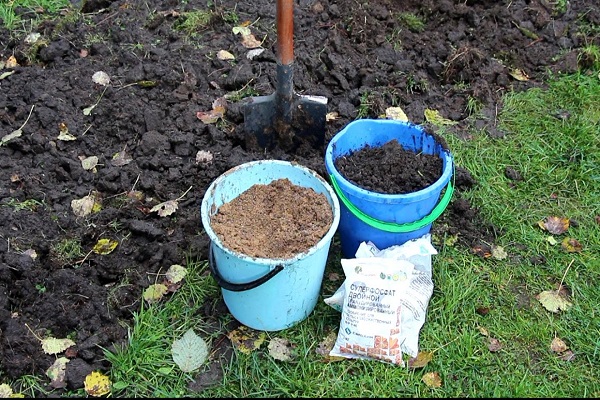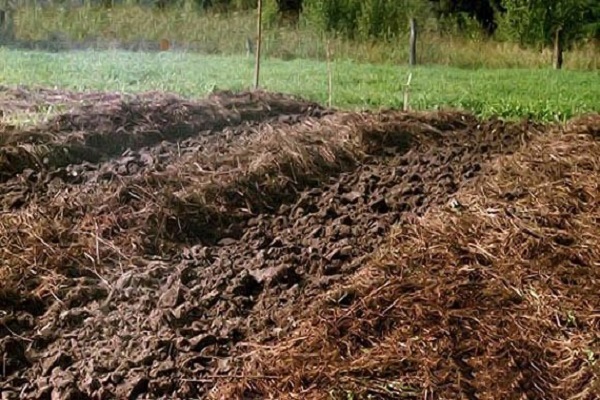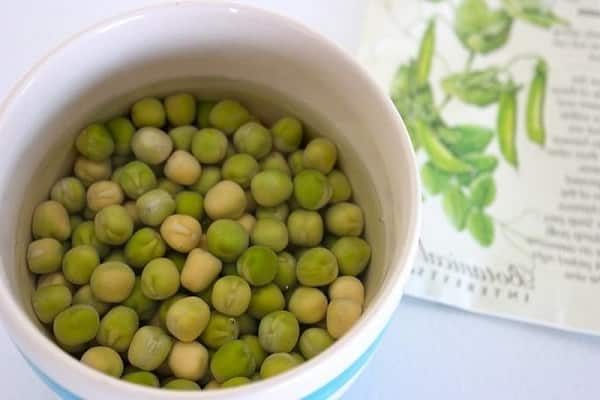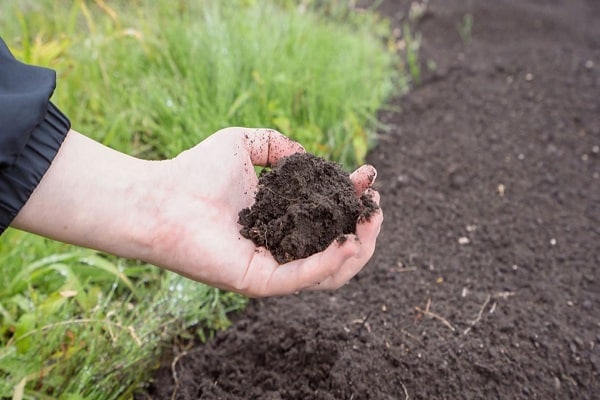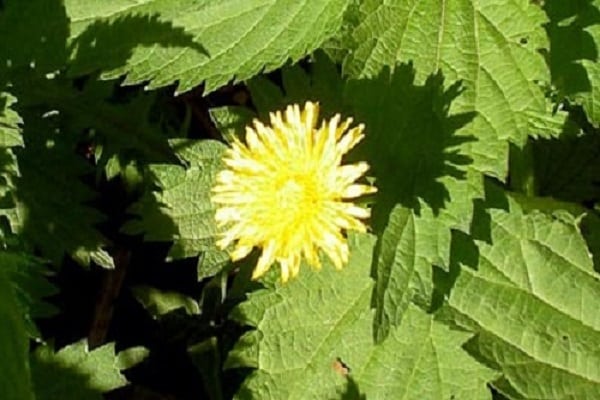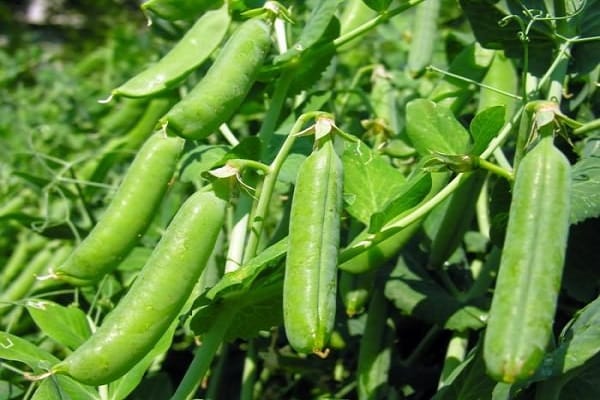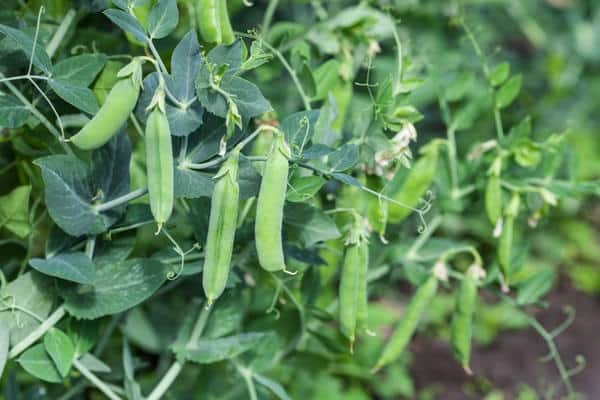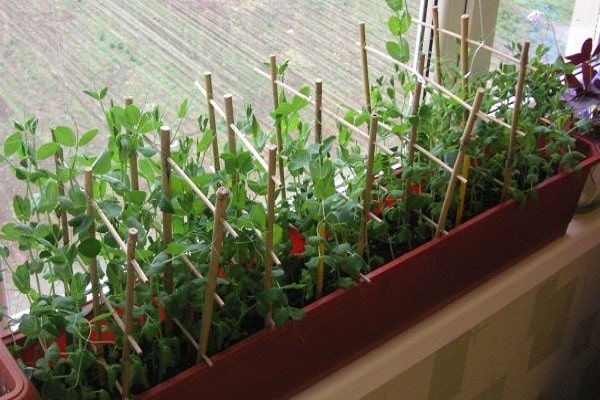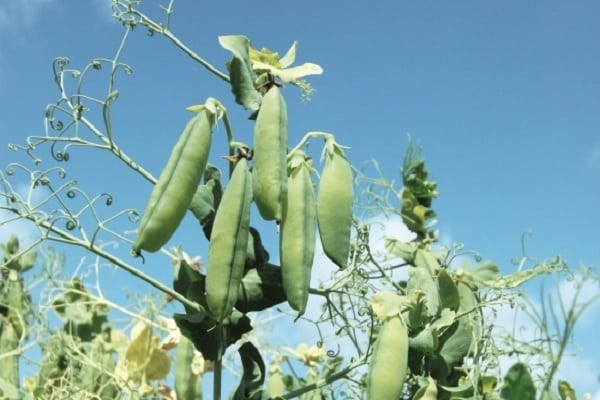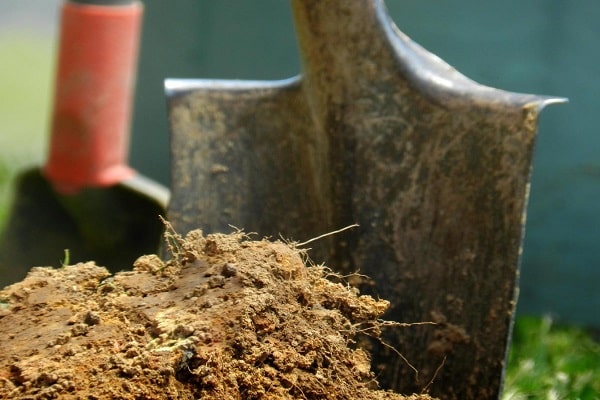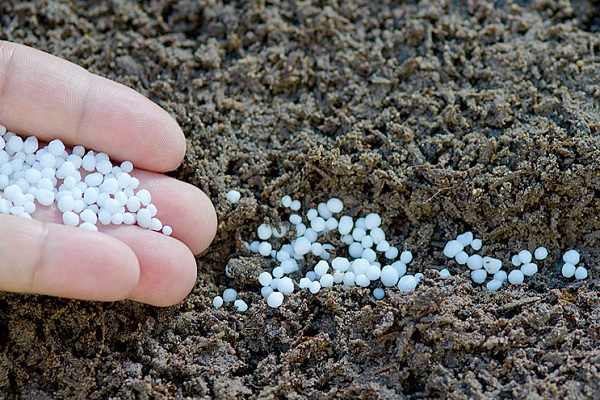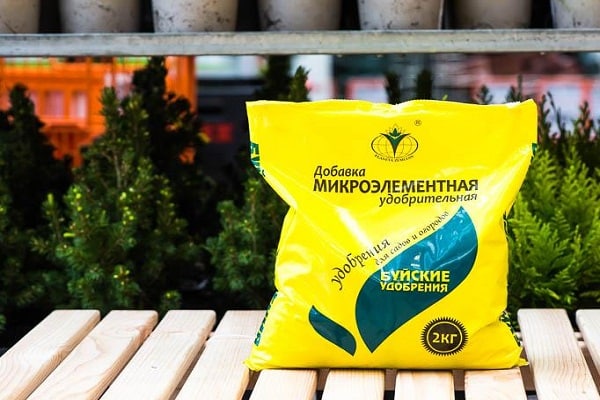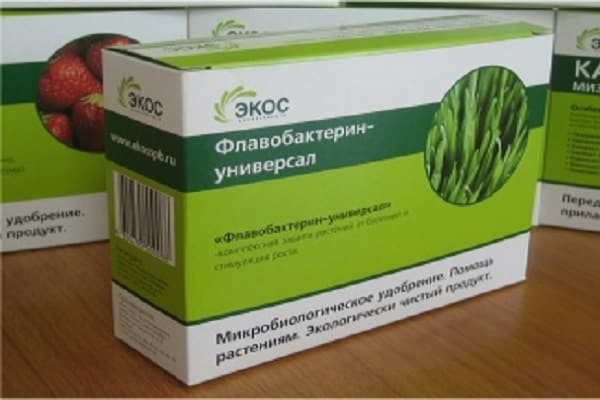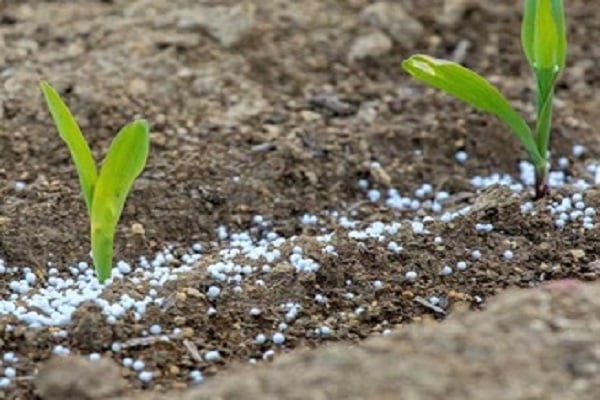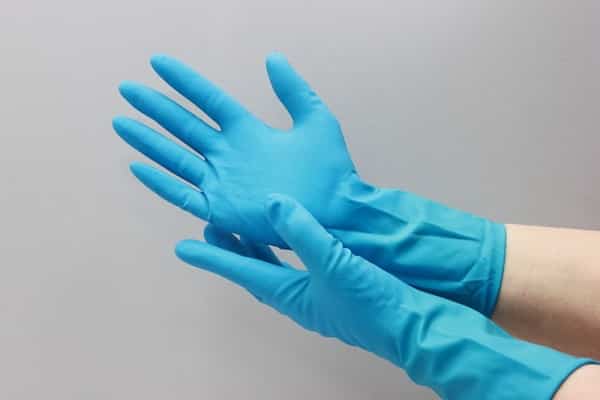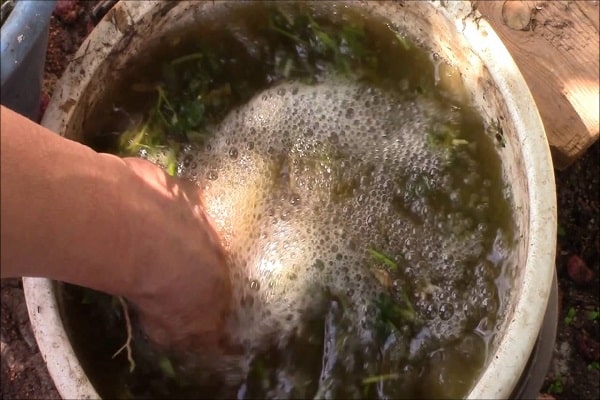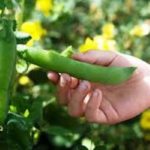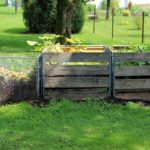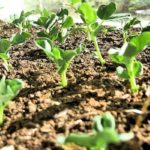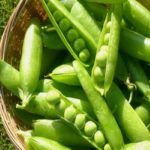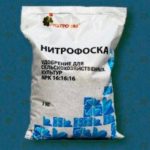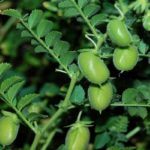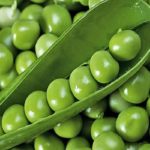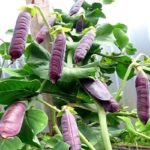Peas contain vitamins B and C, carotene. From the second half of April - early May, it can already be planted in the garden, and the first sweet peas appear in June. Seed germination occurs at +4–6 degrees. The sprouts can withstand slight frosts down to -3 degrees.
This vegetable crop is quite demanding on soil conditions. To increase the yield, it is necessary to use fertilizers for peas.
Fertilizing the soil before planting
If the soil has been well cultivated since the fall, then it does not need fertilizing before planting. Typically, caring for a garden in September for planting peas for next year comes down to the following:
- a fertile area of slightly acidic soil is selected;
- the bed is dug up, fertilizers are applied (30 grams of potassium salt + 60 grams of superphosphate per 1 m2);
- the earth is dug up in the spring, fed with saltpeter (10 grams per 1 m2).
But in the event of a cold spring, nitrogen fertilizer must be applied. The formation of nodules occurs in heated soil and nitrogen helps them with this.
Seed treatment
To protect future plants from diseases and pests, it is necessary to carry out the procedure of treating the seed material. To do this, pesticides are applied to it, which can completely destroy external and internal infections and protect the sprouts from soil parasites.
Before sowing, the seeds are treated with useful elements, which, once in the soil, are connected by slightly soluble chains. Thanks to this, plants absorb the necessary substances and develop better.
It is popular among experienced gardeners to treat seeds with elements such as iron, copper, cobalt, iodine, molybdenum, and manganese. The procedure itself is quite simple, and the additives do not harm the future harvest.
Features of fertilizer on different soils
Peas grow well in many types of soil, but not in acidic, light sandy or saline soils. High acidity of the soil provokes infections in plants; they cannot gain strength. If soil unfavorable for vegetables is found on the site, it must be limed, that is, add 350 grams of lime per 1 m2.
Botanical experts recommend sowing seeds on medium loamy soils, moisture-absorbing and rich in humus.It is necessary to know for sure whether there is groundwater in the area, because pea roots can penetrate deep into the ground. Too much moisture has a negative effect on plants.
Top dressing
To provide the vegetable crop with sufficient nutrition, it is necessary to apply fertilizers as follows:
- After harvesting in the fall, spread over 1 m2 half a bucket of rotted grass.
- When planting, fertilize the ground with saltpeter, potassium salt, superphosphate (40 grams of each item per 1 m2).
- During germination, add a green infusion (nettle plus dandelions).
- When flowering, feed with nitrophoska (1 tablespoon per bucket of water). Consumption - 5 liters per 1 m2.
In the open ground
It is recommended to fertilize peas growing in beds twice per season. The first time fertilizing is required is when the plants begin to flower. To do this, take 1 tablespoon liquid fertilizer and diluted in 10 liters of water. At 1 m2 3 liters are consumed. You should water right to the roots, using a watering can without a sieve. To improve growth, peas are sprayed with a natural stimulant. The procedure should be carried out in non-sunny weather, early in the morning or in the evening. The crop is fertilized a second time when the first blades appear.
In the greenhouse
During growing peas under the film, you need to feed it 2 times with any complex mineral fertilizers. The first time is when the plant begins to bloom, the second time - before the fruit ovaries appear.
Attention! Pea leaves Aphids love to eat, so if you find one, you should wash it off with water. If a crop is affected by powdery mildew, the diseased plant must be destroyed immediately, as the infection spreads quickly.
On the windowsill
Feeding weak sprouts is done using a urea solution, diluting 1 gram of the substance per 1 liter of water.Fertilizer is applied when the peas reach 8–10 cm in height.
To get a good harvest at home, you must follow the following rules:
- do not buy fertilizers that contain nitrogen in nitrate form;
- during sowing, use water-soluble phosphate;
- do not water potash fertilizers containing chlorine;
- When flowering, water and feed regularly.
Types of fertilizers
Peas require fertile soil. Newly bred varieties have a high ability to absorb large amounts of mineral microelements. To get a decent harvest, plants must absorb 3 parts of nitrogen, 1 part of phosphorus, 2 parts of potassium and 1.5 parts of calcium.
Organic
Some gardeners do not recommend using this type of fertilizer. In their opinion, peas begin to grow rapidly and quickly rot. There is also an assumption that peas can only be sown next year after fertilizing with organic matter. Despite this, the vegetable crop loves such fertilizing and feeds well on poorly soluble phosphorus compounds.
Phosphorus-potassium
It is best to apply phosphorus and potassium fertilizers in the fall before digging up the garden. If you follow this advice, then compared to spring feeding, the effectiveness of this increases to 30%, and in dry times - up to 50%. It is recommended to use potassium fertilizer with the least amount of chlorine in its composition.
Microelements
There is often a need to use boron. Its amount in the soil increases with the application of manure and decreases after liming.
When fertilized with molybdenum, pea yields increase by up to 50%. This element helps the nodules develop better and increases the amount of protein and sugar.Mainly root feeding is carried out.
Copper is very effective on peat and sandy soil. The most commonly used are copper sulfate and copper sulfate.
Peas simply need magnesium. If it is deficient, the yield may drop sharply. If there is little calcium in the soil, then it is safe to say that there is also little magnesium there. Dolomitized limestone or potash fertilizers are used to enrich the soil.
Bacterial
Microorganisms can improve the nutrition of peas. They do not contain any useful elements. Scientists have created several types of such fertilizers - Agrofil, Mizorin, Rizoagrin, Flavobacterin and others. After application, root nutrition increases and biochemical processes intensify.
Processing methods and dosage
The pea fertilization system includes the following recommendations:
- To prevent plants from gaining excess biomass and rotting on the roots, it is better not to use organic matter directly under the bushes.
- Fertilizers with nitrogen are applied in a ratio of 30–45 kilograms per 1 ha2, if the soil contains humus up to 1.8%, with a lack of moisture and low temperatures.
- It is better to apply phosphorus and potassium fertilizers locally.
- Copper sulfate is used if copper is less than 9 mg/kg in peat-bog soils and 3.3 mg/kg in soddy-podzolic soils.
- When sowing peas on acidic soil, it is necessary to lime them in advance in the fall.
Safety during processing
To avoid negative consequences after using fertilizers, you must follow the following rules:
- Do not weed or loosen the soil while fertilizing.
- Use protective gloves, closed clothing, and respirators.
- Do not increase dosages.
- Wash your hands and face with soap after work.
Peas as fertilizer
Peas have an amazing feature of enriching the soil with nitrogen compounds. Plant nodules that form in the root system are rich in microorganisms. They absorb nitrogen from the air and feed the crop with mineral salts and water. So valuable properties help peas grow even on depleted soils.
After harvesting, the plants leave the soil, which remains enriched with nitrogen. Therefore, the land no longer requires additional application of manure. It is well known that peas are an excellent predecessor for many garden plants.

